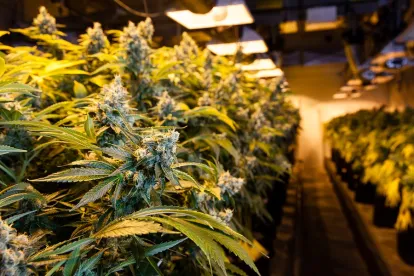The year 2020 saw increasing acceptance of cannabis in the US, as indicated by legalization in another five states, proposed federal legalization, and the designation of cannabis (where available) as essential during the coronavirus pandemic. The United Nation’s recent reclassification of cannabis signals similar changes on a global scale. As a result of these changes, cannabis “growing” has evolved into a $14 billion industry in the US for which the benefits of federal laws, including bankruptcy and trademark protections, have been sometimes uncertain. The benefits of the US patent laws, however, are broadly available to innovators, and as demonstrated in 2020, this includes plant patents on cannabis.
Plant Patents vs. Utility Patents for Plants
Plant patents are different than utility patents. Utility patents are granted to anyone who invents or discovers a new and useful process, machine, article of manufacture, or composition of matter. Plant patents are granted to anyone who invents or discovers and asexually reproduces any distinct and new variety of plant. Plant patents were traditionally granted on useful sports that could be propagated by cloning — such as an early-flowering fruit tree or a new-colored rose.
Plant patents provide much narrower protection than utility patents. A utility patent gives its owner the right to prevent anyone in the US from making, using, selling, offering to sell, or importing the claimed invention. A plant patent gives its owner similar rights, but only for clones of the patented plant. In other words, a plant patent does not cover plants grown from seeds of the patented mother plant.
As is generally the case, cannabis plant patents have been much less common than cannabis utility patents. Fewer than 50 applications for cannabis plant patents have been published, whereas thousands of applications for utility patents related to cannabis have been published — including applications for patents on methods of extracting oils, growing plants, vaporizing plant product, and treating disease with particular plants or formulations, as well as compositions of particular extracts (e.g. powders, lozenges, creams) and food preparations, such as cannabis and whey powder.
The Count
As of summer 2019, only three (3) plant patents had ever been granted on cannabis plants. The first cannabis plant patent was PP27,475 on Ecuadorian Sativa, issued just four years ago on December 20, 2016 to Steven Kubby. The second cannabis plant patent was PP30,434 on LW-BB1. It issued on April 23, 2019 and is now owned by Green Brands LLC. A third cannabis plant patent, PP30,668 on DD-CT-BR5, issued shortly thereafter on July 9, 2019, and is now owned by Cannagen LLC.
Also in the summer of 2019, a hemp plant patent PP30,639 on CW2A was granted to Joel Stanley on the famed Charlotte’s Web strain used to treat a severe form of childhood epilepsy. It is owned by CWB Holdings, Inc. Hemp plants are in the genus Cannabis, but by definition they have less than 0.3% of the psychoactive compound tetrahydrocannabinol (THC).
In 2020, another nine (9) cannabis plant patents issued. Eight of these patents were filed by Biotech Institute, LLC, as reported earlier this year. The Biotech Institute patents are: PP31,535 on Lemon Crush OG, PP31,707 on Grape Lolipop, PP31,724 on Primo Cherry, PP31,752 on Cake Batter Cookies, PP31,874 on Holy Crunch, PP31,917 on Raspberry Punch, PP31,918 on Rainbow Gummeez, and PP32,473 on Bihemp 050924. The ninth of these patents is PP32,318 on MR2017002, and it is owned by Aurora Cannabis Enterprises, Inc.
Requirements for Cannabis Plant Patents
Additional applications for cannabis plant patents have been filed and some remain pending. Many of those have been rejected, though, because they do not satisfy the requirements of the patent office, and many had to be abandoned because the problems could not be fixed. The disclosure requirements for plant patents are supposedly relaxed compared to utility patents, but the patent examiners are requiring considerable detail for cannabis plant patents.
For example, an application for any plant patent must include a detailed botanical description of the plant, including the characteristics that distinguish it from previously existing plants. The application must also specify how and where the plant was asexually propagated. The examiners of cannabis plant patents are requiring technical details about the manner of propagation, clear identification of the place of propagation, and scientific descriptions as to how reported levels of THC and CBD were determined.
The examiners are also particular about the plant name. By law, a US plant patent constitutes registration under the International Union for the Protection of New Varieties of Plants (UPOV), so long as it includes a name for the plant variety. Some of the issued cannabis plant patents have colorful names and some do not. If another party has a trademark on the proposed varietal name, the Examiner may reject the application and require that the name be changed.
Takeaway
It may be possible, in some situations, to get a utility patent that covers cannabis plants as defined by certain features, especially genotypic features. The twelve cannabis plant patents issued to date confirm, however, that it is now possible to patent a distinctive cannabis mother plant — so long as the application is properly prepared. As we look toward 2021, we expect to see more cannabis plant patents.




 />i
/>i

